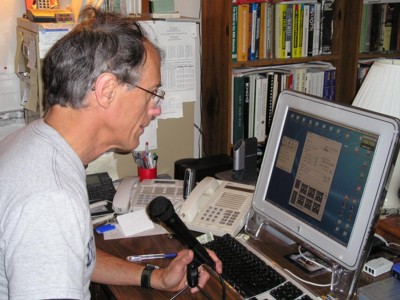|
Feel free to pass around original, unaltered copies of the mp3 files. In fact, I
encourage sharing of these files so more people can hear these files
while saving bandwidth charges for me at the same time. If you can put
the files up on an internal company server, BitTorrent, or any of the file sharing services, so much
the better. The first file, really a test file, dated December 28, 2005 is the introduction to more that follow. At first there will be a few per month increasing in frequency to once per week or more as soon as I get a feel for the volume of traffic to expect. I hope these podcasts prove useful to the engineering community. Feel free to send me suggestions for improvement. One way to reach this page is by clicking the image of a microphone on my main site (http://emcesd.com, http://www.dsmith.org, or http://hfdesign.org). That microphone link will always point to the current location of this page. You may also bookmark this page directly. |
 Doug at the Microphone |

